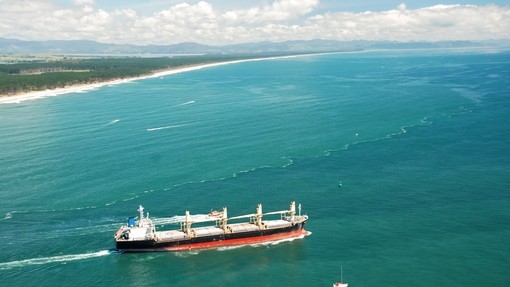The M/V "RENOS" – Supreme Court decides what costs should be included in owners’ CTL calculation

Details
The Supreme Court’s landmark decision in the M/V “RENOS” (the Vessel) [2019] UKSC 29 is of particular importance to shipowners, hull underwriters, salvors, average adjusters and brokers in the marine insurance market as the Supreme Court has clarified whether i) costs incurred prior to the date of the notice of abandonment (NOA) and ii) Special Compensation P&I Clause (SCOPIC) costs, should be taken into account in determining whether a vessel is a constructive total loss (CTL). Both of these issues are of enduring importance in the insurance market since their financial and practical implications are significant.
Factual background
On 23 August 2012 the Vessel sustained extensive engine room damage off the Red Sea Coast caused by a fire, an insured peril under the policies, resulting in the Vessel losing main engine power and requiring salvage assistance. LOF with SCOPIC was signed, and SCOPIC was invoked.
The owners, on 1 February 2013, over five months after the casualty, tendered a NOA which was declined by the underwriters for being given ‘far too late’.
The hull underwriters denied the Vessel was a CTL as a matter of quantum as well as contended that the owners had in any event lost their right to abandon the Vessel and claim a CTL on the basis that the NOA was served too late. The owners of the Vessel (represented by our Piraeus office) brought proceedings in the High Court against the underwriters under the hull and machinery policies. The insured value was for US$12 million topped up by an increased value policy of US$3 million.
The owners’ claim was successful in the High Court before Justice Knowles. The hull underwriters appealed to the Court of Appeal. The Court of Appeal unanimously dismissed the appeal on all grounds.
The hull underwriters appealed to the Supreme Court. The Supreme Court refused leave to appeal on the issue of whether the NOA was given too late, and therefore the Court of Appeal’s decision on this important point, emphasising the fact sensitive nature of an owners’ right to abandon his vessel as well as that all surrounding circumstances including the insurers’ conduct shall be taken into account when considering the lateness of a NOA, shall be deemed as final. However, the hull underwriters were granted leave to appeal on two issues, namely:
- Should pre-NOA expenses count towards the calculation of a CTL?
- Specifically amongst pre-NOA expenses, should SCOPIC remuneration (after Article 13 payments have been taken into account) count towards a CTL calculation?
The Supreme Court dismissed the appeal on issue one and allowed the appeal on issue two. Lord Sumption delivering the main judgment, with whom Lord Reed, Lord Hodge, Lord Lloyd Jones and Lord Kitchin agreed without further comment, considered the following issues and held:
Supreme Court’s decision
- Should pre-NOA expenses count towards the calculation of a CTL?
This issue has attracted a lot of attention since although it must have arisen in a high proportion of cases where a CTL is alleged, very little assistance can be obtained from the language of the Marine Insurance Act (the Act) or from previous authority.
The Supreme Court rejected the hull underwriters’ submission that references in section 60 of the Act to expenditure which ‘would’ be incurred, were intended to point only to future expenditure incurred after NOA is given. There is no mention of NOA in section 60 as well as no indication from the point of time from which these costs must be ‘future’. Lord Sumption expressed the view that the word ‘would’ reflects the hypothetical character of the whole exercise rather than the chronology of the expenditure. The same logic also applies to the reference in section 60(2)(ii) to ‘future’ salvage operations and general average contributions.
The Supreme Court referred to the two previous English decisions on this issue (namely Hall -v- Hayman (1912) 17 Comm Cases 81 and The Medina Princess [1965] 1 Lloyd’s Rep 361) but was reluctant to attach much weight to either decision due to the lack of reasoning and apparent lack of argument. Therefore, the Supreme Court approached the issue with reference to basic principles of insurance law principles along with an analysis of how these principles are affected by the legal requirement of a NOA.
The Supreme Court held that, taking into account the objective character of the factual enquiry of whether a vessel is a CTL and the fact that the loss under a hull and machinery policy occurs at the time of the casualty, (notwithstanding that it may develop thereafter unless there is a break in the chain of causation, i.e. by a second casualty), the damage referred to in section 60(2)(ii) of the MIA is in principle the entire damage arising from the casualty from the moment it happens. Therefore, it cannot make any difference when costs are incurred; i.e. pre or post NOA. Having held that, the Supreme Court went on to consider whether this principle might be affected by the legal requirement for a NOA and held that it is not. In fact, it considered that ‘it would be surprising if it were’.
Therefore, the Supreme Court affirmed the decision of the courts below and held that the ‘cost of repairing the damage’ for the purpose of the CTL calculation includes all reasonable costs of salving and safeguarding the Vessel from the time of the casualty onwards, together with the prospective cost of repairing her. Further, it held that the cost of repairing the damage can in no way be considered ‘adeemed’ because part of it has already been incurred at the time when NOA is given and action is brought on the policy, as the hull underwriters contended.
- Specifically amongst pre-NOA expenses, should SCOPIC remuneration count towards a CTL calculation?
The SCOPIC remuneration payable to the salvors in the “RENOS” case over and above the notional Article 13 Award (being US$1,248,391.4) was US$1,427,867.2.
The Supreme Court accepted that the words ‘costs of repairing the damage’ include some costs which are not directly expended on the actual reinstatement of the vessel but are preliminary to that reinstatement; i.e. salvage charges or temporary repairs, since their objective purpose is to enable the ship to be repaired. The Court further acknowledged that the mere fact that the insurer would not, under the policy terms, be liable to indemnify the assured for some item of expenditure on a partial loss basis, does not necessarily mean that this cannot be included in the CTL calculation.
However, the Supreme Court held that the objective purpose of SCOPIC expenditure is not to enable the ship to be repaired, but to protect owners’ potential liability for environmental pollution, which is unconnected with the damage to the hull or its hypothetical reinstatement.
The mere fact that a prudent uninsured owner would have contracted with the same contractors for both the protection of the property and the prevention of environmental pollution does not show that both are part of the cost of repairing the damage and does not make them indivisible.
Therefore, the appeal on this point was allowed holding that SCOPIC charges cannot be considered as a part of the ‘cost of repairing the damage’ under section 60(2)(ii) of the Act or the ‘cost of recovery and/or repair’ under clause 19.2 of the Institute Clauses.
Comment – conclusion
While the Supreme Court has affirmed the courts below in holding that pre-NOA expenses must be taken into account into the CTL calculation as a matter of principle, it has taken a different approach with regard to SCOPIC costs.
Much reliance was placed by the Supreme Court on SCOPIC’s purpose being the protection of environmental pollution and the theoretical ability of an owner to contract with salvors on terms which exclude the SCOPIC clause. Not much was said however regarding SCOPIC being part of the cost of recovery of the Vessel under clause 19 of the ITC Hull Clauses which was partly the basis upon which the previous courts had made their decisions.
Nor does the judgment explore the practical reality that many cases involve counting as SCOPIC remuneration payment of acts and endeavours of the salvors on low-value funds which have nothing to do with the stated primary purpose of protection against the environment.
In view of the inclusion of pre-NOA expenses but exclusion of SCOPIC costs, the matter has been remitted back to Knowles J to determine where in the range of US$ 11,820,260.05 to US$ 13,989,038.20 (as against an insured value of US$ 12 million) the cost of repairs for the MV “RENOS” lay and as such whether the Vessel was a CTL or not. Admittedly however, the financial consequences of SCOPIC being excluded from the CTL calculation will certainly be greater in other cases, where SCOPIC costs may amount to many times the remuneration attributable to the Article 13 award.
Although the matter shall not yet be considered settled pending the outcome of the remission before Knowles J in the High Court, the issues of law that had remained unanswered for years have now been clarified and shall be considered as good law.






